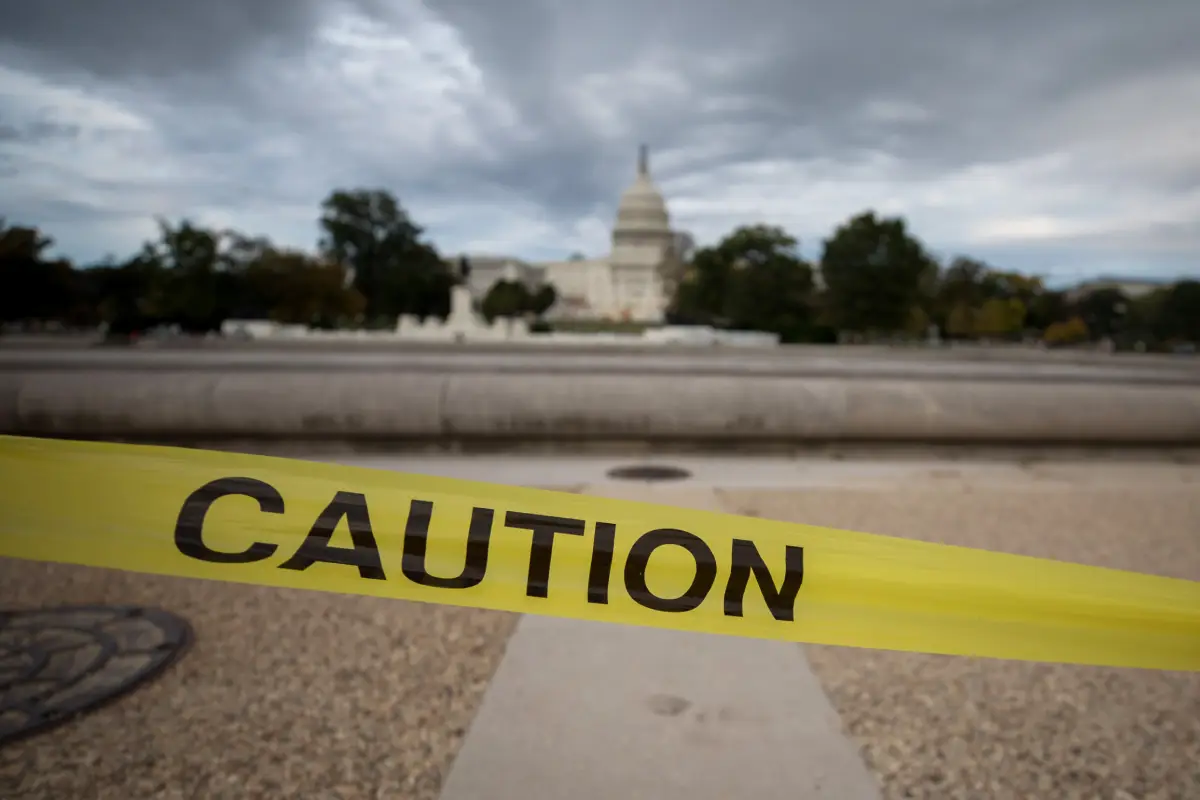The federal government shutdown has now stretched to 27 days—a grinding standoff that’s gutting paychecks, stalling benefits, and straining patience from Washington to the smallest towns. What began as a political game of chicken has become a slow-motion national emergency, testing both the economy and the public’s tolerance for dysfunction.
Airports are the latest flashpoint. Over 2,700 flights were delayed Monday, with Sunday clocking more than 8,600, according to FAA data. Thousands of air traffic controllers and TSA officers are working without pay, and the system is starting to crack. Transportation Secretary Pete Buttigieg warned that shortages could worsen, citing fatigue and burnout among critical staff. What’s happening in the skies mirrors what’s happening everywhere else: exhaustion and uncertainty replacing routine.
On the ground, the situation is just as bleak. The Supplemental Nutrition Assistance Program (SNAP)—lifeline for more than 40 million Americans—is days away from running out of funds. The Department of Agriculture has confirmed that if the shutdown continues past November 1, benefits will simply stop. Preschool and food programs serving low-income families face the same cliff. States are scrambling to find short-term fixes, but those reserves won’t last.
Meanwhile, federal workers have gone nearly a month without pay. In Washington, D.C., World Central Kitchen, founded by Chef José Andrés, has begun distributing free meals to government employees, many of whom are now lining up for food assistance themselves. The American Federation of Government Employees, the largest union representing federal staff, has demanded a “clean” bill to reopen the government—no political riders, no games, just paychecks and stability.
Where’s the off-ramp?
Politically, though, nothing’s moving. The Senate has failed multiple times to advance Republican-led funding measures. House Speaker Mike Johnson admitted over the weekend that he’s “not 100 percent sure” whether service members will continue to be paid if the impasse drags on. Democrats are holding firm on preserving healthcare and subsidy funding, while Republicans insist on cuts and immigration amendments. Neither side is blinking.
The shutdown’s ripple effects are multiplying. Scientific research has paused. Small businesses waiting on federal loans are in limbo. National parks remain shuttered. And millions of Americans—especially in areas like rural Pennsylvania—are caught in the middle, watching as political stalemate morphs into personal hardship.
Each passing day costs the U.S. economy hundreds of millions in lost productivity and delayed spending. But beyond the numbers, there’s a deeper damage being done: the erosion of trust in government itself. People expect political fights. What they don’t expect—or deserve—is paralysis.
What prediction markets say
The bettors don’t believe in miracles. With the federal shutdown grinding past Day 27, prediction markets are calling this one for the long haul—possibly the longest in a generation. Traders on Kalshi are putting the odds of a shutdown lasting more than 35 days at roughly 67 percent, and a 50 percent chance it drags past 40 days. That’s not a deadlock; that’s a slow bleed.
Over on Polymarket, the sentiment’s even bleaker. Contracts there show a 76 percent probability the government remains shut well into November. Earlier in the month, Kalshi’s own forecasts hovered near 66 percent that we’d still be stuck in gridlock by Halloween. Now, with no signs of a deal and public pressure mounting, those bets are aging like milk. The longer Washington bickers, the more traders double down on endurance over compromise.
Business Insider’s latest snapshot puts it plainly: four out of ten bettors expect the shutdown to last until at least November 16. That’s two more missed pay cycles for hundreds of thousands of federal workers, plus mounting delays for everything from food assistance to travel infrastructure. Markets aren’t just pricing in frustration—they’re pricing in paralysis.
The why isn’t hard to find. Negotiations between congressional Republicans and Democrats have stalled over spending caps and healthcare provisions. Speaker Mike Johnson keeps floating patchwork bills that die in the Senate, while Democrats refuse to accept cuts that would gut social programs. It’s the same political math that got us here—only now it’s compounding with every unpaid day.
Kalshi’s traders aren’t just gambling; they’re reading the room. Each passing week without a viable continuing resolution reinforces a simple narrative: no side is ready to cave. And the data backs it up. Volume on shutdown contracts has surged since mid-October, showing that traders—often ex-Wall Street or data pros—see gridlock as the safest bet in Washington right now.
If you look back to the 2018-2019 shutdown, the longest on record at 35 days, markets back then underestimated how deep the stalemate could run. This time, they’re correcting for that blind spot. The consensus? We’re already past the point where a quick fix looks realistic.
In prediction-market terms, the odds don’t just reflect policy—they shape perception. Every uptick in those numbers makes it harder politically to claim progress. Lawmakers feel the heat when the “smart money” says they’re failing, but that pressure cuts both ways: concede too soon, and they confirm the bet.
So the market’s message is blunt: expect weeks, not days. The shutdown is now the baseline, not the outlier. The odds say Washington’s dysfunction is the only thing you can count on—and for the rest of the country, that’s the most expensive wager of all.

























